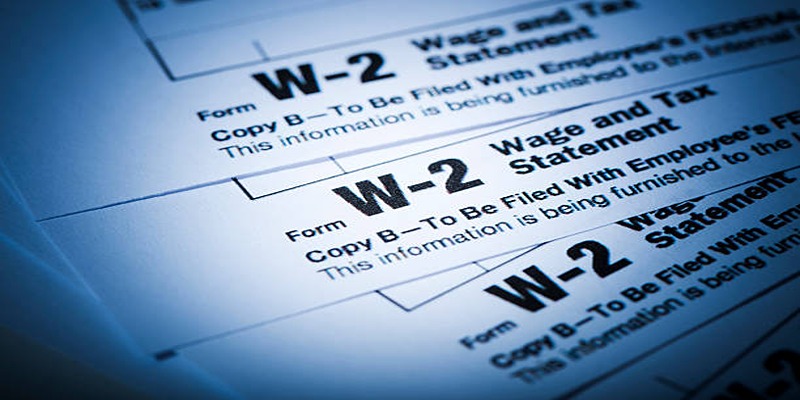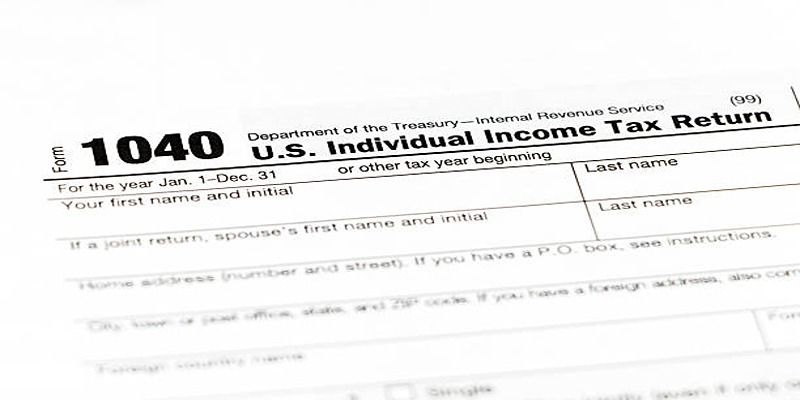Navigating Tax Season: The Top 8 Tax Forms You Need to Know About
Mar 24, 2024 By Susan Kelly
Tax season can often feel overwhelming, with a maze of forms and regulations to understand and comply with. Whether you're a seasoned taxpayer or tackling your taxes for the first time, knowing which forms apply to your situation can significantly streamline the process. This guide aims to demystify tax season by introducing you to the top 8 tax forms that are most commonly encountered. From forms that report your income, such as W-2s and 1099s, to those that help you claim deductions or credits, understanding these documents is the first step towards a smoother tax filing experience. We'll break down the purpose of each form, who needs it, and why it's important, helping you to confidently navigate the complexities of tax season.
W-2 Form

The W-2 form is essential for anyone who is employed and receives a salary or wages from their employer. It outlines the total amount of money youve earned from a particular employer during the tax year, as well as the taxes withheld from those earnings. This includes federal income tax, Social Security, and Medicare taxes. Issued by employers by the end of January each year, the W-2 form is crucial for filing your tax return accurately. It helps you understand how much youve earned, and what youve already paid towards your tax obligation, making it one of the most important documents to have on hand when preparing your taxes.
1099-MISC Form
Similar to the W-2 form, the 1099-MISC form is essential for anyone who receives miscellaneous income during the tax year. This includes self-employed individuals, freelancers, and independent contractors who receive payments of $600 or more from clients or businesses. Examples of this type of income include rent, royalties, and nonemployee compensation. If youve received income from multiple sources, you may receive multiple 1099-MISC forms. These forms are used to report your miscellaneous income to the IRS and must be included in your tax return.
1040 Form

The 1040 form is the standard individual income tax return form used by most taxpayers. It serves as a summary of all your sources of income, deductions, and credits for the tax year. Depending on your specific situation, you may need to attach additional forms or schedules to your 1040 form. This form must be filed by April 15th, unless an extension is requested. It's important to note that the 1040 form has been redesigned for the 2020 tax year and now includes schedules 1-3, which previously existed as separate forms.
Schedule A Form
The Schedule A form is used by taxpayers who choose to itemize their deductions instead of taking the standard deduction. This includes expenses such as mortgage interest, state and local taxes, and charitable contributions. It's important to carefully consider whether itemizing deductions is beneficial for your situation, as it may result in a lower overall tax bill. The Schedule A form must be attached to your 1040 form when filing.
Schedule C Form
The Schedule C form is used by self-employed individuals and sole proprietors to report business income and expenses. This form is crucial for accurately reporting your income and determining any deductions or credits that may apply to your business. It's important to keep detailed records of all business-related income and expenses throughout the year to make filling out this form easier.
Schedule D Form
The Schedule D form is integral for taxpayers who need to report capital gains or losses from investments such as stocks, bonds, or real estate. This includes the sale of any property not connected with a business, the sale of investment property, and gains or losses from the sale of stocks or bonds. Reporting these transactions accurately is crucial for determining the tax implications of investment activities during the tax year. By meticulously documenting each transaction, taxpayers can ensure they accurately report their investment income and take any capital losses that may offset other gains, potentially reducing overall tax liability. The Schedule D form must be attached to the 1040 form, serving as a detailed record of investment-related activity.
Form 5498
This form is used to report contributions made to an individual retirement account (IRA). It includes the total amount of contributions made during the tax year and any rollover or conversion amounts. Taxpayers who contribute to a traditional IRA may be able to deduct these contributions on their tax return, potentially reducing taxable income. For those with a Roth IRA, contributions are taxed at the time they are made, but withdrawals in retirement are tax-free. It's important to accurately report contributions made to an IRA on Form 5498 to ensure you receive any applicable deductions or credits.
Form 1098
Form 1098 is used for reporting mortgage interest and related expenses. This includes both deductible and non-deductible interest, as well as mortgage insurance premiums and points paid on a new mortgage. Taxpayers who own a home may be able to deduct mortgage interest on their tax return, potentially reducing taxable income. This form is typically issued by the end of January each year by your lender.
Conclusion
Navigating tax season can feel overwhelming, but understanding these top 8 forms will help ensure you have a smoother experience. It's important to keep detailed records and accurately report all income, deductions, and credits to avoid potential audits or penalties. And if you ever feel unsure about any tax forms or filing requirements, it's always best to consult with a tax professional for guidance. Happy filing! So remember, make sure you have these forms on hand when preparing your taxes, and don't hesitate to seek help when needed. With a little bit of organization and knowledge, you can conquer tax season like a pro.

Susan Kelly Dec 07, 2023
Creating Adoption Budget

Elva Flynn Dec 06, 2024
How an International Payment Provider Works

Susan Kelly Mar 24, 2024
Navigating Tax Season: The Top 8 Tax Forms You Need to Know About

Triston Martin Nov 18, 2023
Recession Watch: Assessing the Current Risks

Sid Leonard Dec 04, 2024
Mastercard and The Clearing House Extend Partnership on RTP<

Susan Kelly May 12, 2024